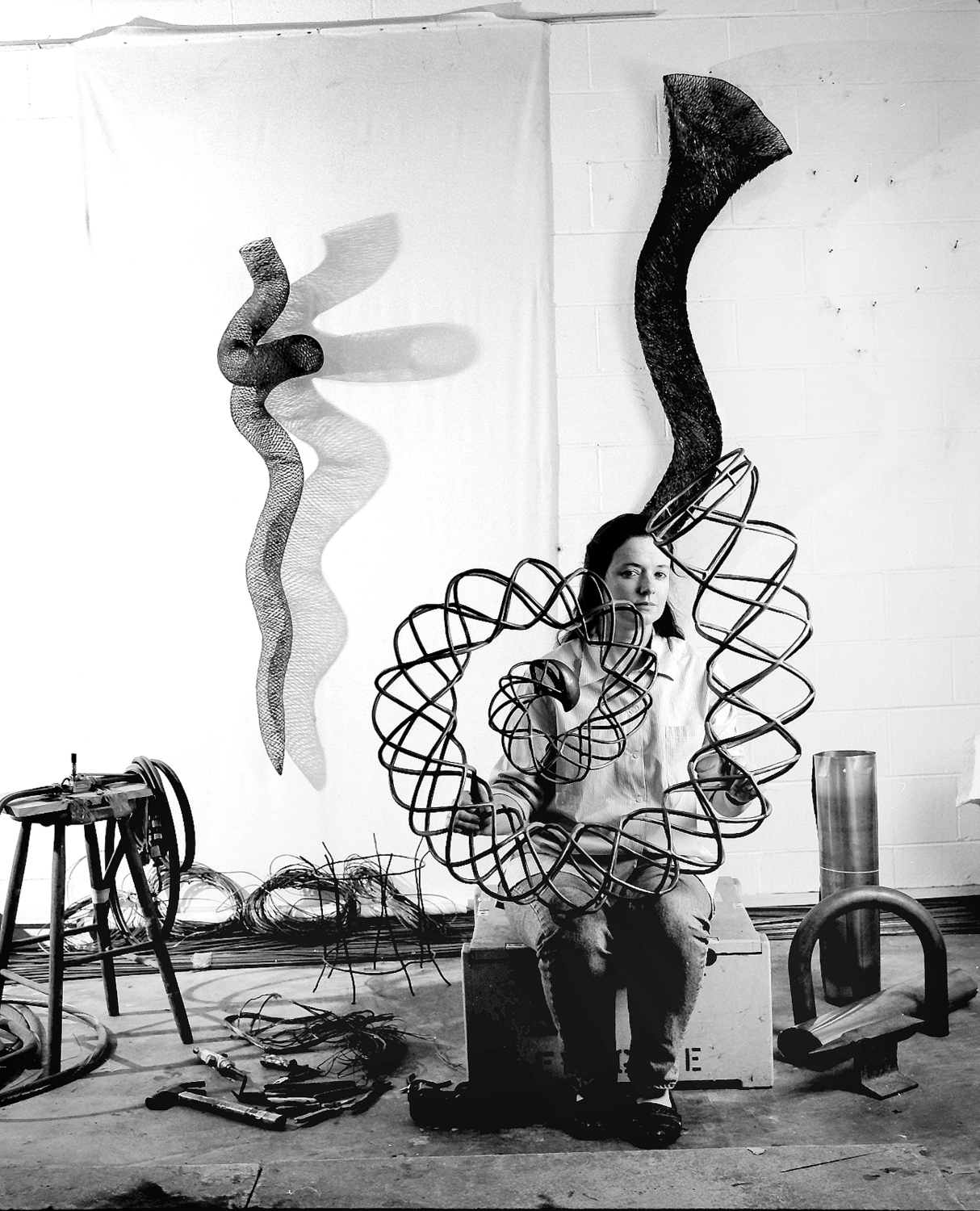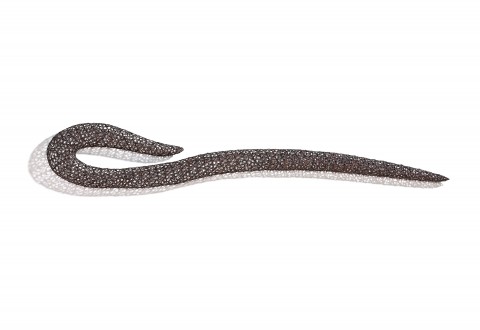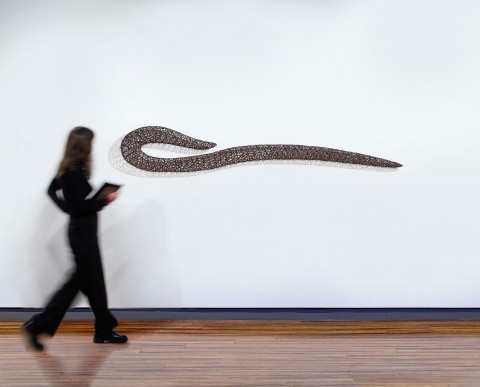Lick, 1996
Bronwyn Oliver
copper
230.0 cm length
Roslyn Oxley9 Gallery, Sydney
Private collection, Melbourne
Deutscher and Hackett, Sydney, 30 November 2016, lot 48
Private collection, Sydney
Fink, H., Bronwyn Oliver: Strange Things, Piper Press, Sydney, 2017, pp. 114 (illus.), 121, 219
160609 Bronwyn Oliver CHECK RESOLUTION.jpg

‘When the ideas, the formal elements and the medium all work together, a sculpture will ‘sing’ with a kind of rightness. It takes on a life, a presence, which is removed from this world. It belongs to a mythical other life, without a place in time.’1
One of Australia’s most highly acclaimed and innovative sculptors, Bronwyn Oliver remains celebrated for her extraordinary ability to produce meticulously articulated works of immense beauty and grace that unite timeless, organic forms of the natural world with the abstract logic of geometry. As writer Hannah Fink poignantly observed upon the artist’s untimely passing in 2006, ‘Bronwyn Oliver had that rarest of all skills: she knew how to create beauty. She was modest, yet utterly sure of her vision, secure in the confidence of her originality. Her art was fully resolved – perfect, really – and she stands alone in the annals of Australian art history. There was no-one like her: she invented her own deeply intelligent form, and entered fully into the world that it opened out to her...'2
Simple yet complicated, fragile yet strong, eccentric though at the same time oddly straightforward, Lick, 1991 is a consummate example of Oliver’s delicately woven copper and bronze assemblages that universally surprise and inspire – beguiling both the eye and the mind through their enigmatic presence and mesmerising tactility. Bearing strong stylistic affinities with other horizontal sculptures by the artist, including Curlicue, 1991, Inscription, 2000, Idiom, 2001 and Trace, 2001 (National Gallery of Australia, Canberra) – all of which mimic the stroke of a pen as it scrawls text across a page – Lick features a similarly lyrical, rhythmic form, as intimated by its title. Alluding to the quick movement of a tongue or more metaphorically, the hasty application of paint with a brush, indeed the organic sculptural form seems to possess a life force of its own, a fluid energy that derives from the painstakingly manipulated twists and welds of pliant copper which repeatedly coil and recoil to create the ‘weave’ microstructure that is the hallmark of Oliver’s art. Integral to this duality between that which is immobile and inert, yet also active and dynamic, are the intricate shadows cast by Oliver’s sculpture – an optical aspect so fundamental to the formalist geometry of the work that at times the shadow itself almost becomes more powerful… becomes the object. As Natasha Bullock, elucidating precisely this interplay, observes ‘…in the exchange between these aspects, Oliver’s sculpture suggests a passage from one place to another, a journey from a material dimension into an imaginative other world.’3
Elegant and refined, Lick exemplifies well Oliver’s unique legacy of beauty and wonder, strength and life – her skillful mastery of form, space and material to create flawless sculptural works that, although unmistakably contemporary in their construction, simultaneously betray a timeless, ethereal quality that resonates deeply with the human soul.
1. The artist cited in Sturgeon, G., ‘Bronwyn Oliver’, Contemporary Australian Sculpture, Craftsman House, Sydney, 1991 p. 74
2. Fink, H., catalogue essay for Bronwyn Oliver (1959 – 2006), Roslyn Oxley9, Sydney, 10 August – 2 September 2006, n. p.
3. Bullock, N., in Bond, A. and Tunnicliffe, W., (eds.), Contemporary: Art Gallery of New South Wales Contemporary Collection, Art Gallery of New South Wales, Sydney, 2006, p. 326
VERONICA ANGELATOS

